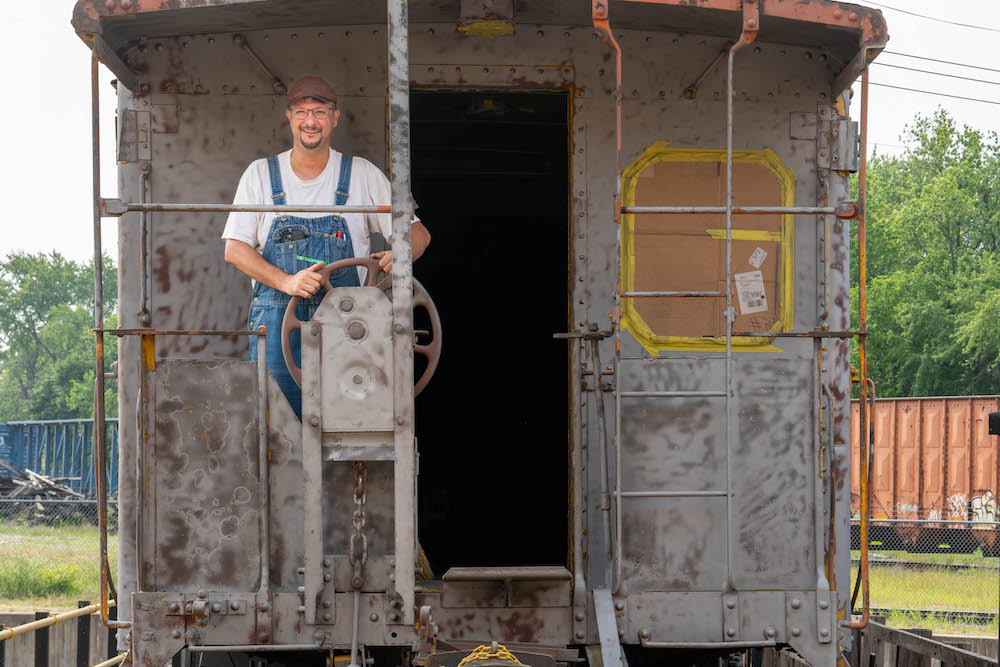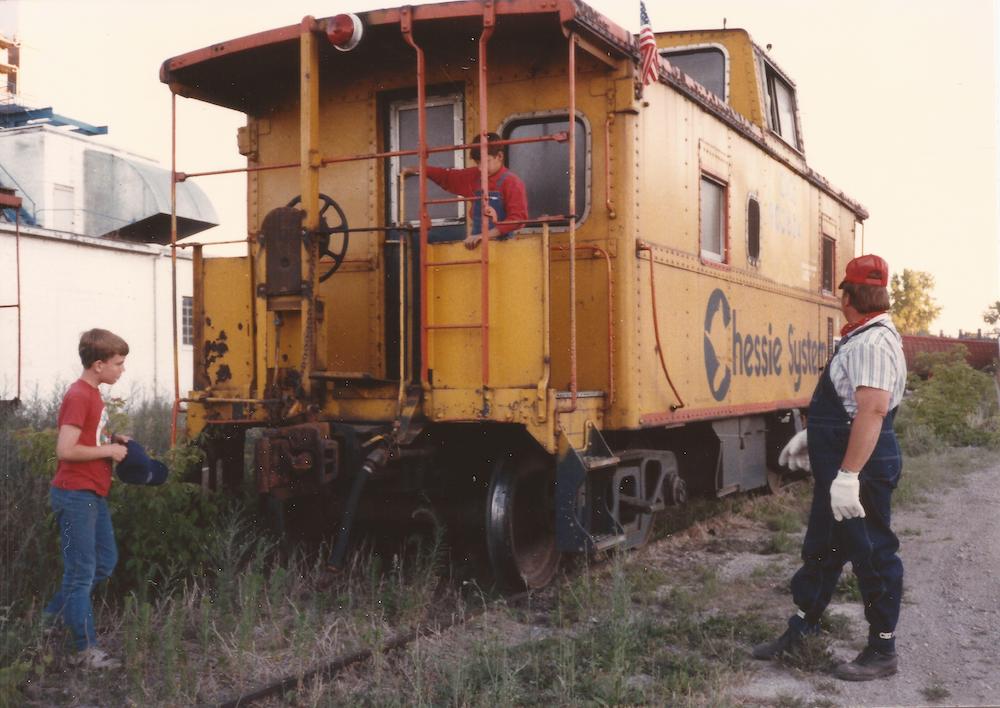
The caboose
Steel caboose No. 3674 was built in 1941 for the former Chesapeake & Ohio Railway, originally numbered 90091. It was rebuilt in Grand Rapids’ Wyoming Yard by 1970 and brought up to the railroad’s modern standards, renumbered as 3674. After 16 years along the rugged main line between Russell, Ky., and Huntington, W. Va., the caboose was ultimately bad ordered. By 1986, it seemed the end of the line for No. 3674 – numbered 903674 at the time – would be at a storage yard in Saginaw, Mich.
Thirty-seven years later, that same caboose has not only survived, it’s getting a new lease on life. Restoration work is wrapping up on No. 3674 for a return to service in passenger excursions throughout mid-Michigan. And it’s all because of a 10-year-old’s letter longing for a caboose.
The boy
Mike Burgett had a myriad of interests during his childhood in Sebewaing, Mich. Trains and railroads were at the top of that list and by 1988, the then 10-year-old had already garnered local connections. They soon led him to the long line of out-of-service cabooses in Saginaw that were getting ready to be scrapped. “My parents checked into getting one for me and [Chesapeake & Ohio successor] CSX Transportation wanted $1,500, which wasn’t too bad at the time,” Burgett reminisced. “But after looking at the cost of moving, it was just out of their budget.”
Not taking no for an answer and suggested by his mom – mostly to get him off her back – Burgett wrote a two-page letter asking CSX to sell a caboose at a cheaper price. The letter’s destination was the corporate headquarters in Jacksonville, Fla. For mother and son, an unforgettable phone call came three weeks later.
“My mom answered it and said, ‘This is her. Uh huh. Uh huh. Uh huh. You’re going to do what?!’” Burgett recalled. “It was CSX calling, basically saying, ‘If you can get the caboose off the tracks and to your property, we’ll give it to you for your son.’”
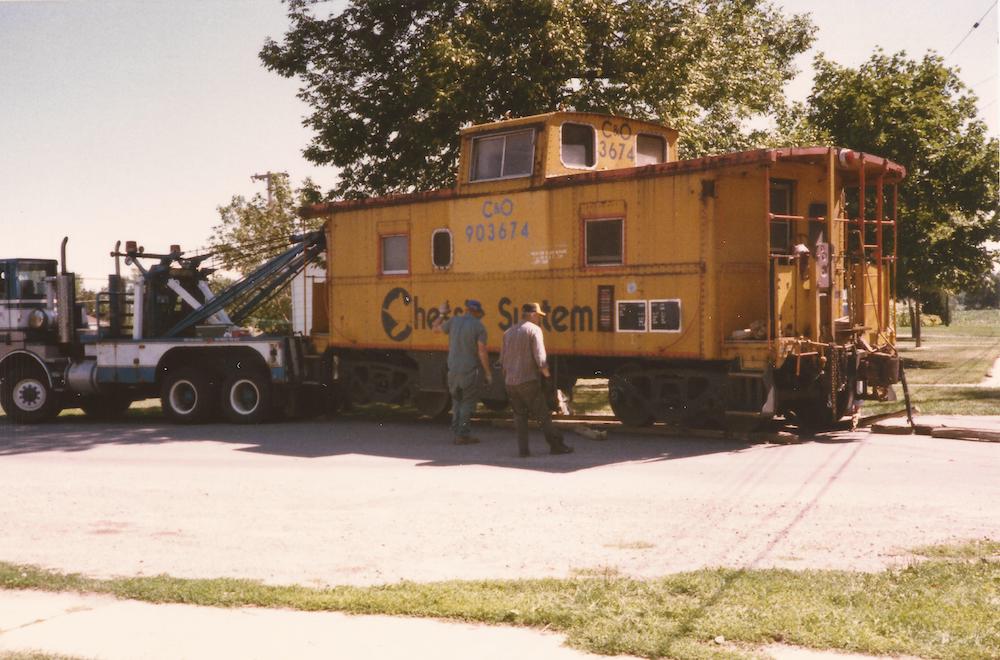
Burgett’s mom had connections to the Sebewaing Blade newspaper, which recognized the potential for a great human-interest story. By the time the article was picked up by the larger Saginaw News and Flint Journal, more phone calls from different companies offering help to the family came in. McNally-Nimergood Crane Rentals donated the lift and offered to move the caboose from the railroad crossing that was less than a mile away from the Burgett property. Stone, ballast, ties, and rail for the display site were also donated. “From the word ‘go,’ it never cost my parents a thing to get it to the backyard.”
Wearing its Chessie System colors and 903674 number since 1977, No. 3674 called the Burgett’s backyard home from 1988 to 2023. A young Mike grew up living in it during the many summers, learning the ins and outs of the caboose firsthand. “It gave me a deeper education,” he said. “One of the big things was the basics of electricity on the caboose’s 12-volt lighting system. You know what’s a battery and how it makes the lights work. All great experiences for a preteen that’s hungry to learn.”
It was that hunger that sparked a career for Burgett. By age 15, he had become interested in the electrical aspect of railroading. His refined interest in signaling lit the way when he left both his home and beloved caboose to pursue his vocation. Burgett today serves as the Senior Manager of Engineering – Signal Design for the Canadian National Railway. His avocation in railroading is headlined by his incredible HO-scale layout of the C&O Clinton Forge Division, while volunteering in the preservation movement with signaling at the Henry Ford’s Greenfield Village near Detroit and serving on the board of directors for the Steam Railroading Institute (SRI) in Owosso, Mich. His latest project brought him back to his roots with No. 3674.
The pivot
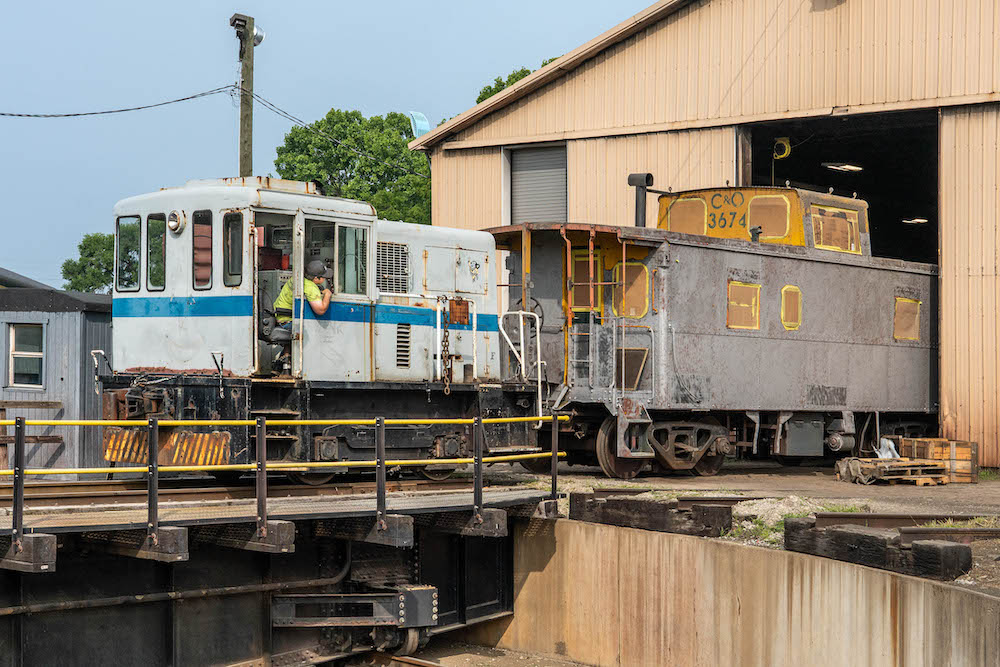
Burgett’s parents wanted to leave their home for warmer weather, but what to do with the old caboose still in the backyard? The family discussed the possibility of donating it to the city of Sebewaing for display, but that ultimately fell through. Burgett pivoted in 2022. “I started talking to SRI’s Master Mechanic of Rolling Stock Aaron Farmer and Executive Director Dean Pyers.”
By February 2023, McNally-Nimergood was called on once again to lift and move No. 3674, this time to its new home at SRI. Donated for use in the institute’s excursion fleet, the restoration work is unlike anything the caboose has received since the 1970 rebuild. “One thing SRI was able to do that I was never able to as a kid was some of the outer bodywork that included dented panels and rust at the base of the frame,” Burgett explained. “Essentially, it will have its 1970 out-shopped appearance in the ex-C&O blue with the big ‘Progress’ logo and 3674 number.”
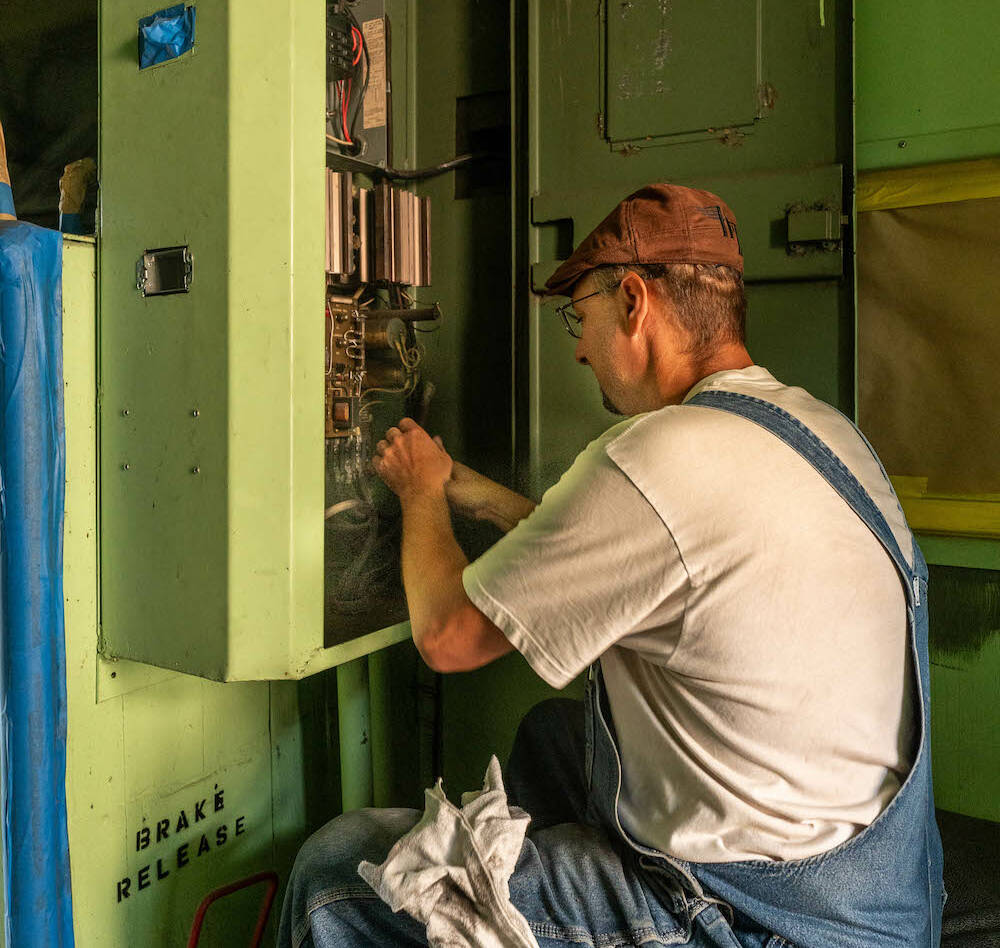
While interior restoration was minor due to the work Burgett put in during his childhood, the task still included replacing windows, plumbing, and updating the electric system. The latter saw the reinstallation of the axle-driven generator with donated parts from the nearby Saginaw Railway Museum. On the mechanical side, Burgett highlights the caboose’s road readiness for the first time in 35 years. “It received a single-car air test along with new angle cocks, brake portions, air hoses, and COTS stencils,” he said. “The wheels were all checked for the compliance of flange wear and are in good shape. This is all the standard FRA requirements from your air brake test to the lubing of the roller bearing system.”
The future
Like most train trips, it’s not always about the destination, but the journey too. The same can be said for the preservation of Chesapeake & Ohio Railway steel caboose No. 3674. Its journey, however, will continue for future generations because it all started with a 10-year-old’s letter longing for a caboose.
“To me, it’s about the caboose,” said Burgett. “And you know, not that it was my caboose, but that it gets to survive past me.”
